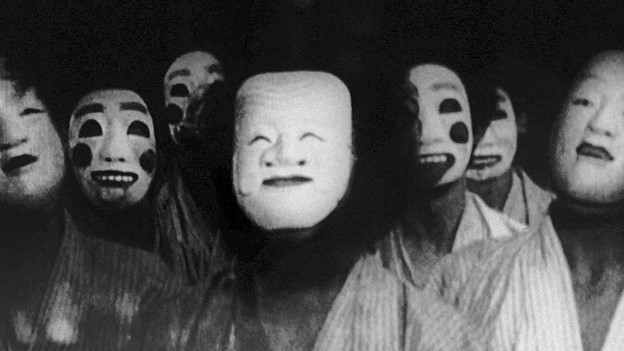A Page of Madness (1926)
Teinosuke Kinusaga's "A Page of Madness"
Teinosuke Kinusaga was certainly not the first successful Japanese filmmaker. However, because many Japanese films are now considered lost, there is very few in the catalog to really study. That being said, Kinusaga is a standout amongst the best and most creative. One of his most well-known films is an avant-garde film called "A Page of Madness." The film is considered to belong to a Japanese group of artists known as 'Shinkankakuha,' or 'School of New Perceptions, who tried to overcome naturalistic representations of filmmaking.
"A Page of Madness" is a very non-traditional film. First and foremost, the film does not contain any title cards. To film historians watching the film now, it may be very confusing what is actually happening in the story. However, in 1920s Japan, silent films were often narrated by a 'benshi.' A benshi had no interaction with the filmmakers in any way. Rather, a benshi would watch the final product of the film and add their own dialogue and narration. On top of that, they would even speak to the audience about their own personal reactions to the film and how they were affected by the images.
Despite personal interpretations by a benshi for "A Page of Madness," the film does have its own independent storyline. The film follows a man who works as a janitor in an insane asylum where his wife is an inmate. Not exclusively told to the viewer, the wife has done some unspeakable acts that have forced her to be here. The man tries desperately to reconcile with wife's imprisonment and how it will affect his daughter's future and her mental stability. The man has visions and dreams that stem from these frustrations. Despite his hopes and fears, nothing changes as he continues to mop the floors.
You would not actually know any of this plot without looking it up, however. The film is a twisting and turning narrative that bends and bleeds with images. The madness from the asylum inmates infects the visual imagery and narrative coherence. Images will stretch and constrict while bizarre fantasies play out. One can only describe this film as 'avant-garde.'
Behind the warping images and twisting narrative of incoherence lies a story about a man whose life and family are falling apart. He fantasizes about breaking his wife out of the asylum, his daughter marrying one of the inmates, and even killing the head doctor. However, no number of dreams or visualizations can change the fate of what has become of his life.
The film was considered lost for a long time. However, in 1971, Kinusaga found the footage in his personal storehouse. Since then, the film has been studies and examined by film scholars everywhere. The conclusion that many draw is that the film is an exciting work of filmmaking that was very creative in its time. It stands out as a work that pushes creative boundaries.




Comments
Post a Comment